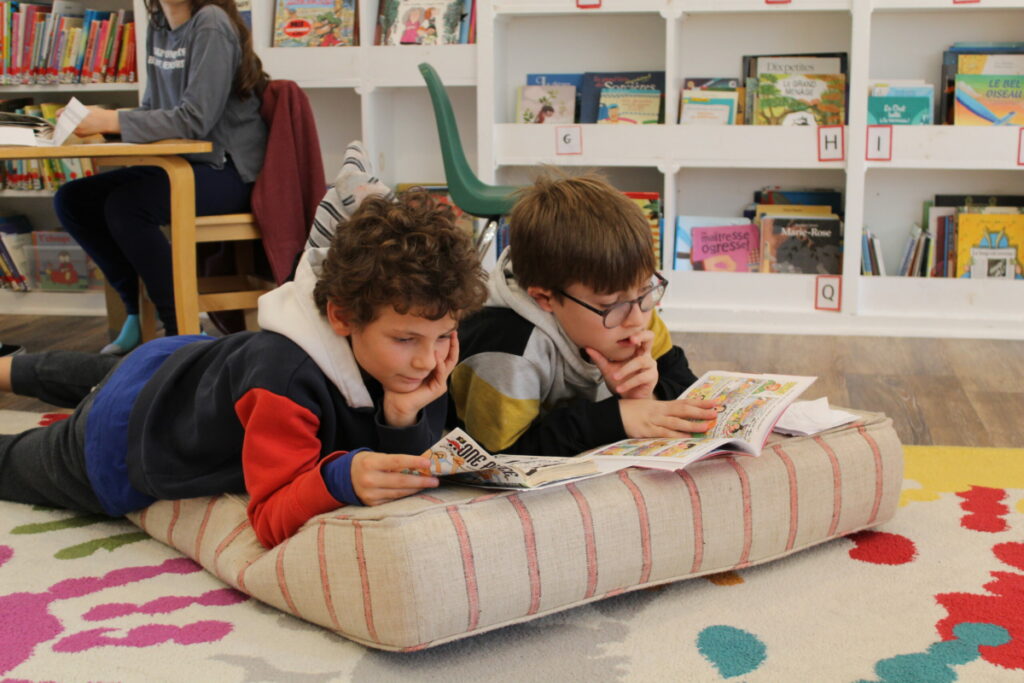At the French American Academy, we understand how vital naps are in the early years. As parents, we often underestimate the power of the afternoon nap. While for adults, it may be a luxury or a way to make up for a late night, for young children, naps are a vital biological necessity, especially during the preschool and kindergarten years. But just like walking or talking, each child’s nap needs to evolve at their own pace.
Table of contents
Why Are Naps So Important for Young Children?

During the early years, a child’s brain undergoes rapid development. Key areas like the hippocampus and prefrontal cortex, which are essential for memory and learning, consume a lot of energy. Sleep helps regulate this energy demand. Why naps are important for Children is evident in how rest supports optimal brain development during these foundational years.
The Benefits of Napping in Early Education
Unlike adults, who can recharge their brains overnight, children often need a short nap in the early afternoon to function optimally. Research shows that naps after learning new vocabulary, for example, significantly improve memory retention.
As a child’s brain matures, it becomes more efficient at processing and storing information, reducing the need for daytime sleep. This natural development leads to the gradual transition from napping to consolidated nighttime sleep.
When Do Children Typically Stop Napping?
Each child develops differently, but knowing common nap patterns by age can provide helpful guidance. This is especially important in preschool and kindergarten settings where structured schedules and developmental needs intersect.
How Much Sleep Does Your Child Need by Age?
A meta-analysis by Staton et al. (2020) reveals:
- Before age 2: less than 2.5% stop napping
- By age 3: 33% no longer nap
- Between 3 and 4: 57% drop naps
- Between 4 and 5: 80% stop napping
- After age 5: 94% have transitioned to only nighttime sleep
Note that these are averages obtained from more than 11 studies, and that the variability of results from one study to another is very significant. Naps are an individual need that evolves differently from one child to the next.
How to Tell If Your Child Still Needs a Nap
Whether at school or home, respecting each child’s unique rhythm is key:
At School

At our preschool and kindergarten, we offer dedicated nap times for children who still need rest during the day.
- We provide nap opportunities from PreK2 to PreK4. In PreK2 and PreK3, naps are part of the daily routine.
- In PreK4, nap time often slowly transitions into quiet time, where children may rest on individual bed cots with soft lighting and a calm environment.
- Our staff regularly observes and adjusts based on individual sleep patterns to ensure every child is supported.
- No child is forced to nap if they don’t need to, but we ensure that every child who requires rest has a quiet and comfortable place to sleep.
At Home

- Observe how your child behaves on days without a nap. Signs of sleep deprivation include irritability, hyperactivity, impatience, trouble concentrating, and falling asleep after school.
- If nighttime sleep is disrupted by napping, consider shortening or replacing the nap with quiet time and monitor how your child adjusts.
Tips for Discussing Nap Needs with Your Child’s Teacher

Check in regularly with your child’s teacher about how naps are going. If bedtime becomes a challenge at home, bring it up and work together to adjust. We believe open communication helps meet each child’s unique sleep needs.
10 Practical Tips to Help Children Nap Better
- Set a Consistent Schedule: Regular nap times train the body to expect sleep, making it easier to settle.
- Use a Calm Routine: Read a quiet book, dim lights, and avoid stimulating activities before nap time.
- Design a Sleep-Friendly Space: Quiet, cool, dimly lit rooms with soft bedding are ideal.
- Watch for Sleepy Signals: Yawning, rubbing eyes, and crankiness mean it’s time to rest.
- Limit Sugar and Heavy Meals: Avoid sugary snacks or large meals right before nap time.
- Avoid Screens Before Rest: Turn off devices at least an hour before nap to support melatonin production.
- Let Them Wind Down with Quiet Time: If they resist naps, quiet play still offers rest.
- Offer Reassurance: Be patient. A cuddle or kind word helps ease the transition.
- Keep a Nap Journal: Track patterns and adjust routines based on what works best.
- Stay Flexible: Some days naps will be skipped, respond with patience and observation.
Key Takeaways on Nap Schedules for Young Children
Understanding and supporting your child’s nap needs is essential for their emotional and cognitive development. Every child is different; what matters most is staying attuned to their behavior and needs, at home and in the classroom. Remember, why naps are important for children goes beyond simple rest, it plays a critical role in helping children grow, learn, and thrive.
At the French American Academy, we are committed to nurturing every aspect of your child’s development, including healthy sleep habits. Our preschool and kindergarten nap routines, from PreK2 to PreK4, are designed to support your child’s well-being and readiness to learn. Naps aren’t just for “babies”, they’re brain-boosting breaks that help little ones grow, learn, and thrive.








